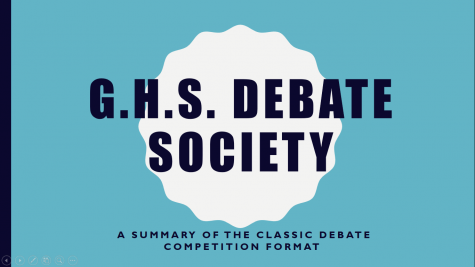Dress Code Blues
November 1, 2017
Dress code, unorthodox or necessary? The subject of dress code and its unfair nature has been sweeping the nation with stories of seemingly ridiculous and biased dress code incidents. Parents are outraged, students are missing class and being humiliated; and this brings about the question, is it time to update the dress code? This year, I have seen my friends (all girls) fall subject to some sort of dress code violation, all of them in clothing that covers them from bottom of the neck to their feet. One girl (Casey Spencer) was pulled from her college course during an important briefing for dress code, after being called up to the front and “inspected.” Her offense? Her shirt had slipped slightly, exposing her shoulder. Another one of my friends was made to scramble and beg others for their jackets at lunch, lest she be written up, because apparently you could see the slight dark outline of her bra through her shirt.
Originally, the strict dress codes of today were intended to control gang related incidents and to lower rates of campus violence, having been implemented and increased in severity since the Columbine shooting of 1999. We see this reflected in our own school’s policy in the way of restricting any clothing that has vulgar language, offensive content, and gang symbols. However, the dress code has proven ineffective in various ways and in most settings. We see this ineffectiveness in play in the reports of gang-related activity in 1989 versus 2011. In 1989, fifteen percent of students in the U.S reported gang-related activity on campus, compared to 2011 in which 46 percent of students reported activity – more gang-related violence in a world with stricter dress codes.
We also see how ineffective the dress code is in preventing violence: since the shooting of Columbine in 1999 through 2016, there have been 141 people killed in shootings on campus grounds in attempted or successful mass murders.
The argument could be made that distracting clothing may disrupt the classroom; however, we see this disproved by the National Assessment of Educational Progress. From the 1970’s to 2012, seventeen-year-olds have shown zero improvement on math and reading. Showing that the increased dress codes have not affected the ability- or lack thereof- of students learning. It is almost as if what we wear doesn’t affect how our brains, or those around us, are able to perceive information.
Going on to another problem: the dress code targets people who fall into certain categories; it is far too sexualized, and it asks too much. The over-sexualization of young girls is already an issue, with constant exposure to new media and online platforms, children are exposed to sexual themes from a young age. By taking young women out of their classes because they are a “distraction” is derogatory and sends an uneasy message. The outline and curvature of a seventeen-year-old girl’s leg in leggings is not going to cause anarchy in the classroom. Supporters of strict dress codes do not give our youth enough credit to control themselves and dictate appropriate attire.











